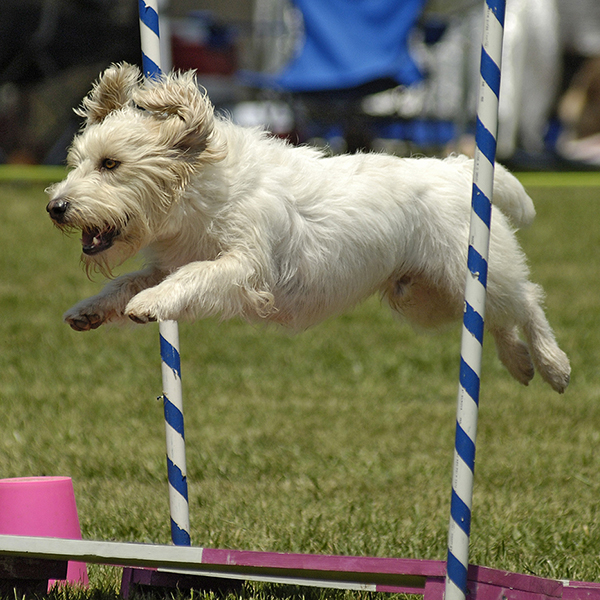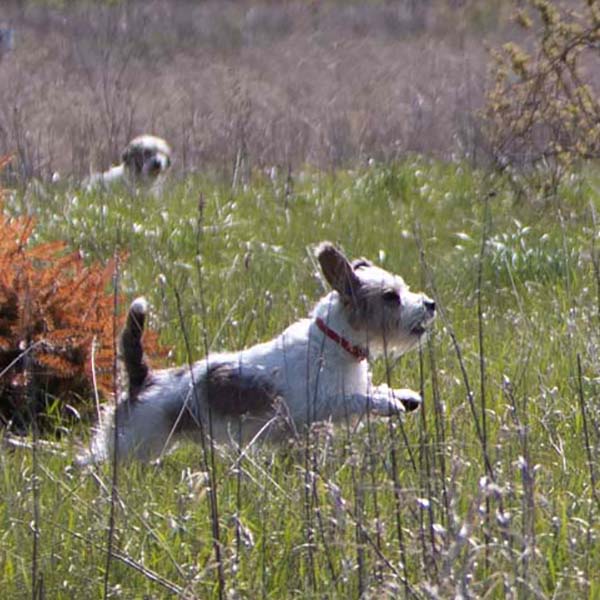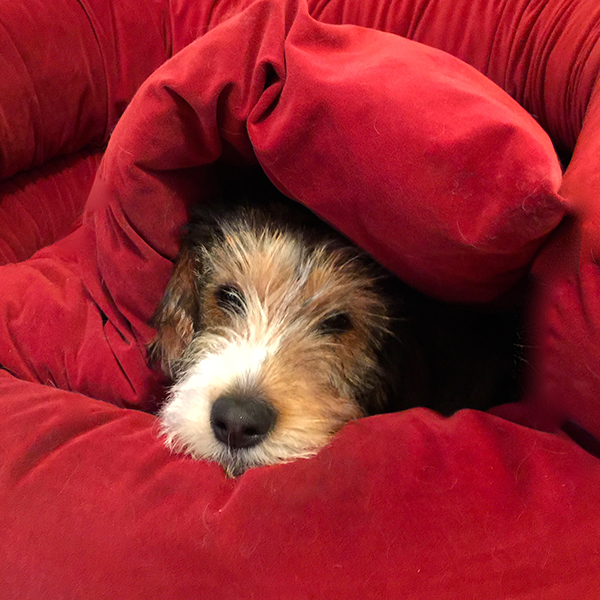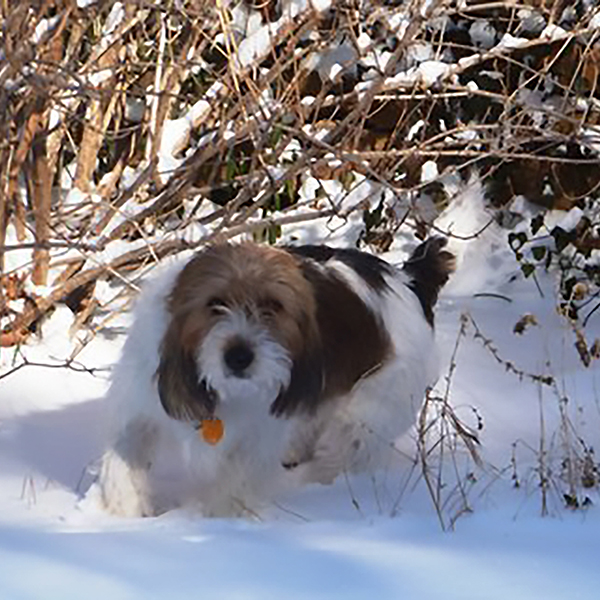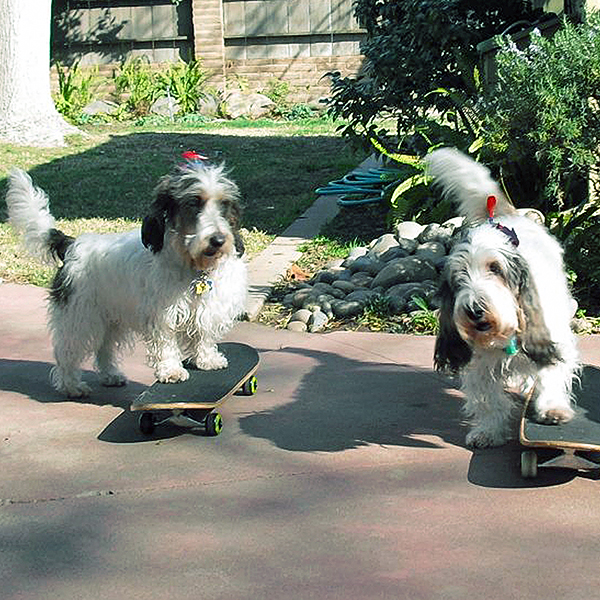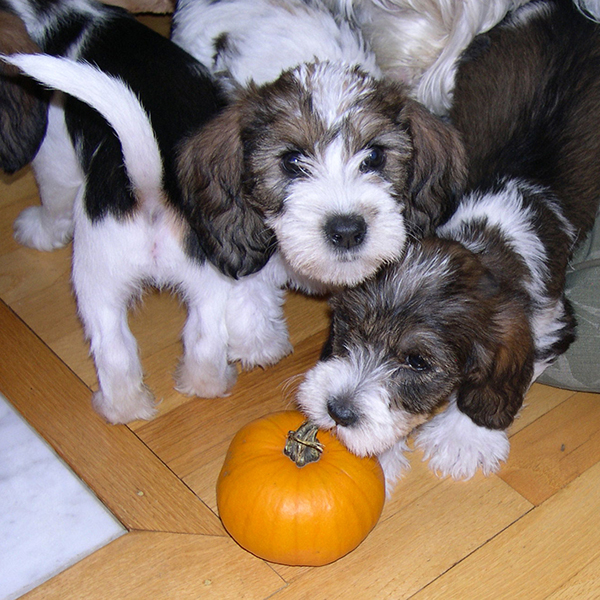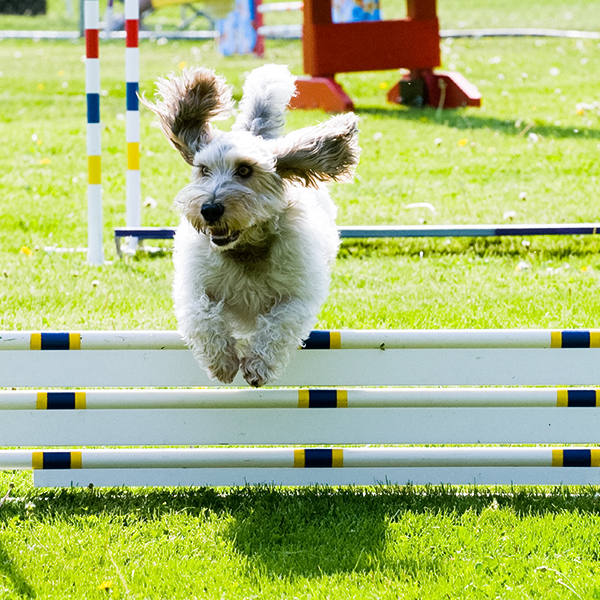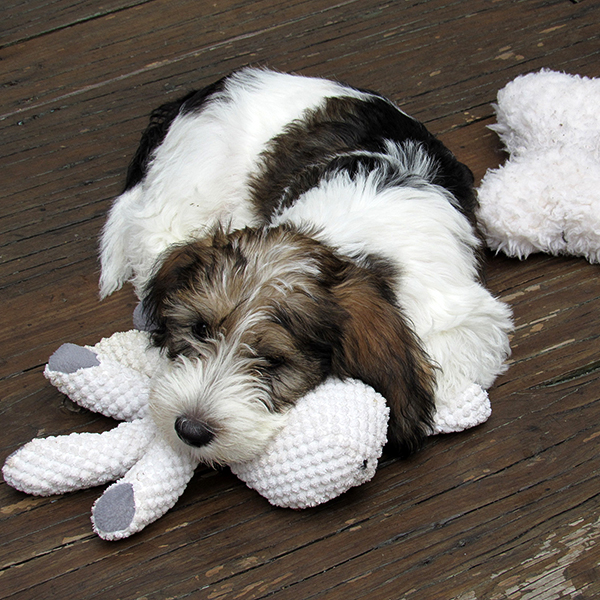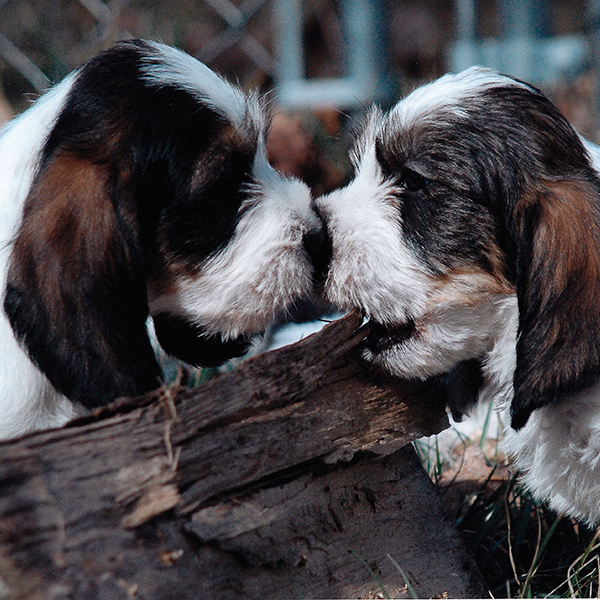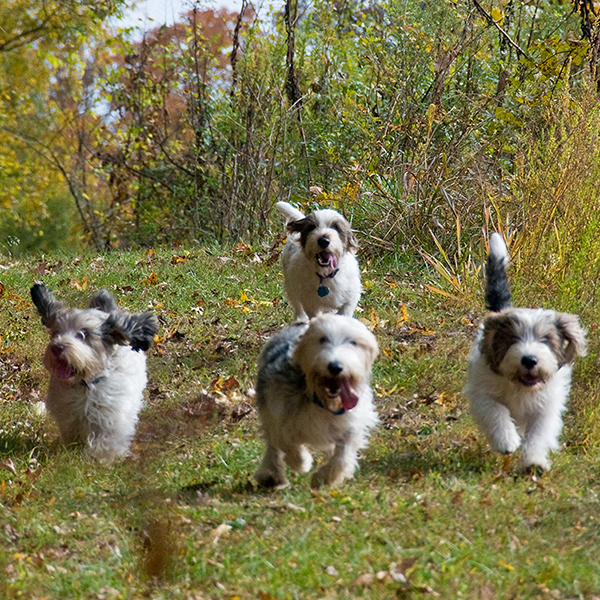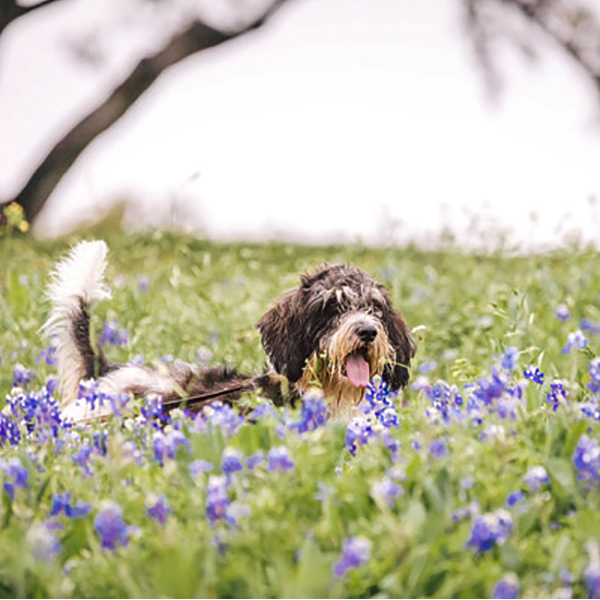PBGVC Mentor Notes ~ 2014
Thank you for mentoring for your breed. Your willingness to mentor is indicative of your desire and determination to assist others in understanding the PBGV. Make sure the students have read the standard. The Mentor Card has three photos which should help delineate important features of breed type. Two photos depict overall outline; the other, the head. While observing the dogs in the ring, point out to your students the varying perceptions in overall conformation due to coat length and texture as well as grooming. Discuss angulation also, the manner in which the handler stacks the dog, and the angle from which you are observing or from which the photo is taken. Mentor Card photos will help here too.
During the judging, ask students to find the 13-15”casual PBGV with breed features fitting into a compact whole. Emphasize the importance of judging the dog as one piece being careful not to single out and isolate or place undue emphasis on any one feature to the exclusion of the others. Help them identify the PBGVs which most closely represent the ideal PBGV. There will always be a range of acceptability since perfection does not exist. There will also be breeder stamps/different styles w/in breed type. Assist them in finding the correct outline when dog is gaiting while noting his happy demeanor.
Explain that some exhibits will be too neatened up thus not casual and unrefined. Some will be au natural possessing that rustic appearance- in hunting- created by the thorn and thicket pulling/thinning coat at random . Others will appear heavy/ unkempt for lack of any grooming. All considered, in the hands on portion help your student evaluate the quality of construction beneath the hair and grooming.
For Discussion:
- After emphasizing the overall outline, have the students select those dogs which appear to fit the description of casual, compact and tousled. Do color and markings alter perception?
- Select some dogs to go over after the judging to demonstrate how important the hands on is. Was their observation at a distance accurate? Front on view – do the legs appear straight yet accommodate the ribcage? Do the feet turn slightly, which is acceptable.
- Have them feel a variety of coats to determine which are naturally strong and course and which are soft.
- Heads: notice a domed skull- oval from front , the length of muzzle nose to stop shorter than from stop to occiput; the little fan up from the mustache to corner of eye, no white showing to the somewhat oval eye; the ear length- ear leather not reaching to end of nose.
- Tail: discuss high tail set and what medium length tail means.
- Ask your students to enumerate the distinctive traits of type for the PBGV- and to list 8 important adjectives from the standard.

